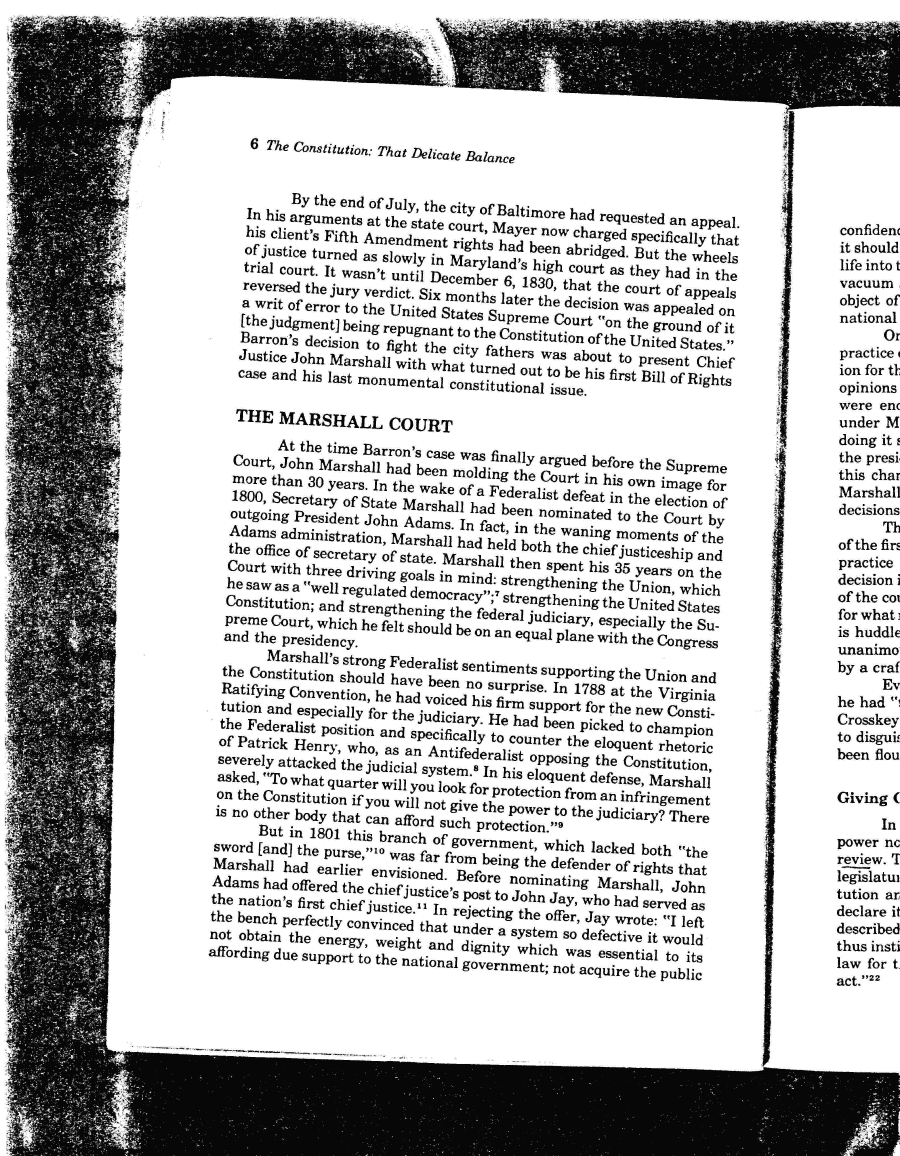|
6 The Constitution: That Delicate Balance
By the end of July, the city of Baltimore had requested an appeal.
In his arguments at the state court, Mayer now charged specifically that
his client's Fifth Amendment rights had been abridged. But the wheels
of justice turned as slowly in Maryland's high court as they had in the
trial court. It wasn't until December 6, 1830, that the court of appeals
reversed the jury verdict. Six months later the decision was appealed on
a writ of error to the United States Supreme Court "on the ground of it
[the judgment] being repugnant to the Constitution of the United States."
Barren's decision to fight the city fathers was about to present Chief
Justice John Marshall with what turned out to be his first Bill of Rights
case and his last monumental constitutional issue.
THE MARSHALL COURT
At the time Barren's case was finally argued before the Supreme
Court, John Marshall had been molding the Court in his own image for
more than 30 years. In the wake of a Federalist defeat in the election of
1800, Secretary of State Marshall had been nominated to the Court by
outgoing President John Adams. In fact, in the waning moments of the
Adams administration, Marshall had held both the chief justiceship and
the office of secretary of state. Marshall then spent his 35 years on the
Court with three driving goals in mind: strengthening the Union, which
he saw as a "well regulated democracy";7 strengthening the United States
Constitution; and strengthening the federal judiciary, especially the Su-
preme Court, which he felt should be on an equal plane with the Congress
and the presidency.
Marshall's strong Federalist sentiments supporting the Union and
the Constitution should have been no surprise. In 1788 at the Virginia
Ratifying Convention, he had voiced his firm support for the new Consti-
tution and especially for the judiciary. He had been picked to champion
the Federalist position and specifically to counter the eloquent rhetoric
of Patrick Henry, who, as an Antifederalist opposing the Constitution,
severely attacked the judicial system.8 In his eloquent defense, Marshall
asked, "To what quarter will you look for protection from an infringement
on the Constitution if you will not give the power to the judiciary? There
is no other body that can afford such protection."9
But in 1801 this branch of government, which lacked both "the
sword [and] the purse,"10 was far from being the defender of rights that
Marshall had earlier envisioned. Before nominating Marshall, John
Adams had offered the chief justice's post to John Jay, who had served as
the nation's first chief justice.11 In rejecting the offer, Jay wrote: "I left
the bench perfectly convinced that under a system so defective it would
not obtain the energy, weight and dignity which was essential to its
affording due support to the national government; not acquire the public
|

